Convoy Defense: Techniques and Strategies
Convoy Defense: Techniques and Strategies. Reference: FM 55-30. Terminal Learning Objectives. Describe convoy defense operations. Enabling Learning Objectives:. A. Identify possible threats to convoys. B. Explain how to maintain operational security.
Share Presentation
Embed Code
Link
Download Presentation
- measures
- security measures
- protective measures
- convoy commander
- convoy defensive measures
- describe convoy defense operations

reginaldd + Follow
Download Presentation
Convoy Defense: Techniques and Strategies
An Image/Link below is provided (as is) to download presentation Download Policy: Content on the Website is provided to you AS IS for your information and personal use and may not be sold / licensed / shared on other websites without getting consent from its author. Content is provided to you AS IS for your information and personal use only. Download presentation by click this link. While downloading, if for some reason you are not able to download a presentation, the publisher may have deleted the file from their server. During download, if you can't get a presentation, the file might be deleted by the publisher.
Presentation Transcript
- Convoy Defense:Techniques and Strategies
- Reference: FM 55-30
- Terminal Learning Objectives Describe convoy defense operations.
- Enabling Learning Objectives: A. Identify possible threats to convoys. B. Explain how to maintain operational security. C. Describe the implementation of fouroperational security measures.
- Enabling Learning Objectives: D. Discuss terrain considerations affecting convoy defense. E. Discuss active and passive measures to defend against air attack, indirect fires, snipers, ambushes, and NBC attacks.
- THREATS
- Threats to Convoys Include: ELO A • Airborne or airmobile forces • Long-range artillery and rockets • Irregular or guerilla forces • Terrorists • Civilians on battlefield Disruption activities may include: ambushes snipers raids sabotage FM 55-30 pg 3-1
- SECURITY
- Operational Security (OPSEC) • Leaders must make OPSEC an integral part of planning for operations, unit training, and day-to-day operations. • Leaders must develop OPSEC protective measures. security measures throughout planning, preparation, and execution phases. Maintain FM 55-30 pg 3-1
- OPSEC Planning Sequence • Determine enemy capabilities for obtaining information about the convoy. • Determine what information obtained by the enemy can compromise the operation. • Determine which actions taken by your unit before an operation, if understood by the enemy, would give the enemy an advantage. • Determine what protective measures are warranted and where they must be implemented. FM 55-30 pg 3-2
- OPSEC Measures Include: • Countersurveillance • Signal security • Physical security • Information security Think active and passive measures. FM 55-30 pg 3-2
- Countersurveillance • Includes all active and passive measures taken to prevent threat forces from seeing your area, equipment, and movements Train on this: Camouflage and tone down vehicles. Move at night. Use terrain as concealment. Enforce noise, litter, and light discipline. Techniques FM 55-30 pg 3-2
- Signal Security • Use communication and electronics security techniques to prevent disclosure of information. Try this: Keep radio transmissions short. Maintain signal silence whenever possible. Use wire communications. Use low power radios. Techniques FM 55-30 pg 3-2
- Physical Security • Use security forces, barriers, dispersal, concealment, and camouflage to deny enemy access to areas of operations (AO) Use LP/Ops in AO. Use front, rear, and flank placement of security. Identify OCOKA. Use obstacles. Use challenge and passwords. Use early warning devices. Be Proactive Techniques FM 55-30 pg 3-2
- Information Security • Information security is the control of written, verbal, and graphic information to prevent the disclosure of operational information. Post information out in the open. Let civilians without clearances into work areas. Handle classified/sensitive papers improperly. Do Not Techniques FM 55-30 pg 3-3
- DEFENSE MEASURES
- Terrain Considerations • Terrain creates the most common natural obstacles affecting convoy movements. • How can you prepare for natural obstacles? • How do you plan for movements through hilly or mountainous terrain? • How do you need to change your plans for movement through swampy ground? FM 55-30 pg 3-3
- Convoy Defensive Measures • Include both active and passive actions. • Convoys must defend against air attack, indirect fires, snipers, ambushes and NBC attacks. FM 55-30 Chapter 6
- AIR ATTACKS
- Reaction to Air Attacks • Convoys are most vulnerable while moving along open roads/during halts with no overhead cover. • How do you prepare your convoy? FM 55-30 pg 6-1
- Reaction to Air Attacks • The convoy commander must: • Prescribe alarm signals (unit SOP) • Direct actions on contact (guidance) • Prescribe actions to take in absence of orders (battle drills) • Ensure actions on contact are rehearsed • Review the procedures with convoy personnel before the convoy moves out FM 55-30 pg 6-1/6-2
- Aircraft Engagement Techniques ELO E
- Passive Defensive Measures against Air Attacks • Passive measures are more effective for logistics units. Why? • The key is convoy dispersion. • Commanders must decide whether to use an open or closed column . • Distance between vehicles must not be fixed. • Factors influencing vehicle distance include: • Mission • Cover and concealment • Length of road march • Type of road • Type of vehicle • Nature of cargo • Enemy threat • Available defense support FM 55-30 pg 6-2
- Defend Against Air Attack with Passive Reactions • If aircraft are spotted or early warning is received, the convoy commander has three options: • - Stop in place • - Continue to march • - Disperse quickly to concealed positions • If the convoy commander chooses to halt the • convoy, the vehicles simply pull of the road in a herringbone pattern. • What are some of the advantages and disadvantages of the herringbone pattern? FM 55-30 pg 6-4
- INDIRECT FIRE
- Reaction to Indirect FireActive Defensive Measures • Active defensive measures are limited but should not be overlooked, they include: - Directing counterbattery fire - Directing small arms fire or artillery against the enemy forward observer (FO) if located - Coordinating air strikes against enemy artillery Train on this Preplanning target reference points (TRPs) and identifying critical friendly zones (CFZs) FM 55-30 pg 6-7
- Reaction to Indirect FirePassive Defensive Measures • Similar to reaction to enemy air, to march, or disperse into concealed positions • The company movement formation either (open or closed) can be a type of passive defense. • Regardless of the action taken, it should be SOP and performed as a battle drill. FM 55-30 pg 6-7
- SNIPER
- Reaction to Sniper FireDefensive Measures • The best actions are passive. • All vehicles should move through the area without stopping. • Be careful of fratricide and civilians on the battlefield when returning fire. • Remember to send a contact report up to higher HQ. FM 55-30 pg 6-7
- AMBUSHES
- Reaction to Ambushes • How can you avoid ambushes? • If an ambush can’t be avoided, what can do to minimize the effects? Think battle drills Attempt to avoid ambushes or reduce their effectiveness FM 55-30 pg 6-8
- Reaction to Ambushes • If the road is not blocked, only a portion of the convoy will likely be in contact. • The part of the convoy in the kill zone must get out rapidly. • Disabled vehicles may be pushed out of the road by follow-on vehicles. • Escort armored vehicles will return fire. • Other vehicles not in the kill zone will stop. • Soldiers will dismount and take up defensive positions and wait for further instructions . FM 55-30 pg 6-8
- Reaction to Ambushes • If the road is blocked, an element is halted in the kill zone and is unable to move because of disabled vehicles or some type of obstacle. • Personnel must dismount, take cover, and return fire. • Reaction forces should fire and maneuver up to conduct a hasty breach of the obstacle. • Detailed rehearsals of actions at the breach are critical. FM 55-30 pg 6-9
- Defend NBC Attacks • Chemical agents can be delivered by artillery, mortars, rockets, missiles, aircraft, spray bombs, grenades, and land mines. • Always be alert because agents may already be on the ground or in the air. • Chemical agents are substances in either gas, liquid, or solid form. • Protect against an NBC attack, you need to know how those agents affect your body if used against you. • Plan to sustainment training on NBC periodically. • . FM 55-30 pg 6-10
- Convoy Defense: Techniques and StrategiesSummary • Name the possible threats to convoys • How do you maintain operational security? • What are the four operational security measures and how do you implement them?
- Convoy Defense: Techniques and StrategiesSummary • Name the terrain considerations affecting convoy defense. • What are the active and passive measures used to defend against air attack, indirect fires, snipers, ambushes, and NBC attacks?
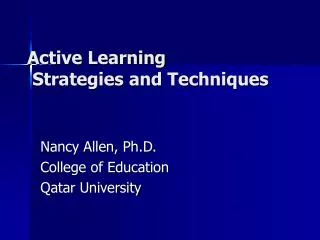
Active Learning Strategies and Techniques
Active Learning Strategies and Techniques. Nancy Allen, Ph.D. College of Education Qatar University. Workshop Objectives. By the end of this workshop, participants are expected to be able to: Investigate current research related to how people learn.
1.71k views • 115 slides
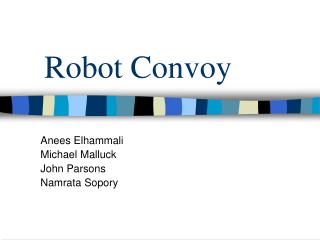
Robot Convoy
Robot Convoy . Anees Elhammali Michael Malluck John Parsons Namrata Sopory. Project Overview . Aim : To simulate a remotely monitored and partially controlled convoy. Convoy bot =. 802.11b hardware. (. +. +. +. Wireless Hub, Game adapter. Olympus Board. Amigobot. )*3+. + 4*.
394 views • 9 slides

Robot Convoy
Robot Convoy . Anees Elhammali Michael Malluck John Parsons Namrata Sopory. Project Overview . Aim : To simulate a remotely monitored and partially controlled convoy. Convoy bot =. 802.11b hardware. (. +. +. )*3+. Wireless Hub, Game adapter. Olympus Board. Amigobot. +. + 4*.
200 views • 17 slides

Convoy Operations and TTPs
649 views • 26 slides

Code Tuning Strategies and Techniques
Code Tuning Strategies and Techniques. CS480 – Software Engineering II Azusa Pacific University Dr. Sheldon X. Liang. Code Tuning Strategies and Techniques. Overview Performance and Code Tuning Introduction to Code Tuning Common Sources of Inefficiency Measurement Iteration
463 views • 24 slides
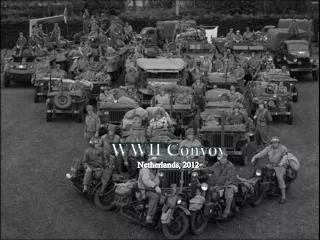
WWII CONVOY
WWII CONVOY. WWII Convoy Netherlands, 2012. Netherlands,2012. Goals. Travel the route of the 7 th Armored Division Full-on authenticity Re-dedicate monuments Ceremonies Skirmishes . Convoy Make-up. 40+ vehicles 2 Shermans 110+ re-enactors. Sleeping Arrangements. Pup tents
449 views • 25 slides
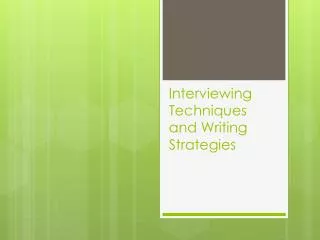
Interviewing Techniques and Writing Strategies
Interviewing Techniques and Writing Strategies. Middle School. Texas College and Career Readiness Standards . I. Writing
407 views • 26 slides
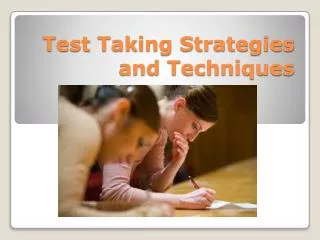
Test Taking Strategies and Techniques
Test Taking Strategies and Techniques. There is no substitute for knowing the material! Prepare yourself thoroughly for your tests. This includes going to class, doing your work and asking for help. Get ready mentally. Study your notes; hopefully you took good ones
244 views • 11 slides
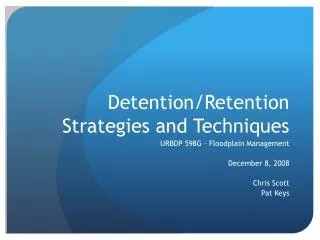
Detention/Retention Strategies and Techniques
Detention/Retention Strategies and Techniques. URBDP 598G – Floodplain Management December 8, 2008 Chris Scott Pat Keys. Goal – Flatten hydrograph and limit peak discharge during flood events.
344 views • 25 slides
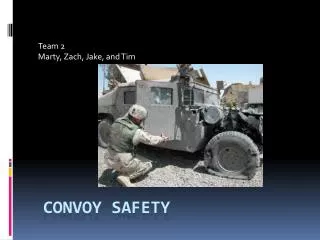
CONVOY SAFETY
Team 2 Marty, Zach, Jake, and Tim. CONVOY SAFETY. Abstract .
375 views • 19 slides
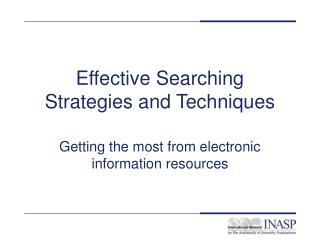
Effective Searching Strategies and Techniques
Effective Searching Strategies and Techniques. Getting the most from electronic information resources. Objectives. To understand the importance of effective searching To develop guidelines for planning and implementing searches
1.58k views • 25 slides

Convoy Safety
Convoy Safety. Vehicle Accidents = Major Losses In OIF/OEF. Convoys Have Been A Focus of Enemy Attacks. Balance FORCE PROTECTION and SAFETY. Convoy Operations Risk Management.
860 views • 39 slides
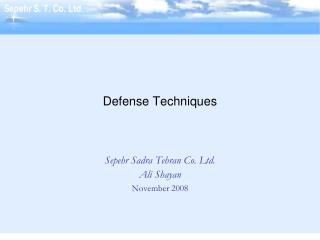
Defense Techniques
Defense Techniques. Sepehr Sadra Tehran Co. Ltd. Ali Shayan November 2008. Overview. Firewalls General Overview Packet Filter, Circuit-Level Gateway, Application Gateway Stateful-Inspection Firewalking. Firewall. Local network is trusted „Outside“ is potentially malicious
373 views • 15 slides
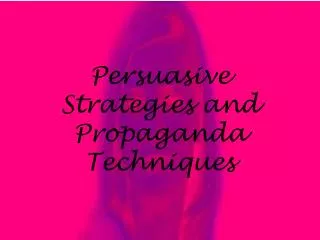
Persuasive Strategies and Propaganda Techniques
Persuasive Strategies and Propaganda Techniques. Ethos. making yourself seem trustworthy and honest reputation. Dr. Oz. Logos. using logic, numbers, facts, and data to support your argument. Four out of five dentists surveyed recommend…. Pathos. appealing to your audience’s emotions
239 views • 16 slides

Convoy Defense: Techniques and Strategies
Convoy Defense: Techniques and Strategies. Reference: FM 55-30. Terminal Learning Objectives. Describe convoy defense operations. Enabling Learning Objectives:. A. Identify possible threats to convoys. B. Explain how to maintain operational security.
638 views • 37 slides

Effective Research Strategies and Techniques
Effective Research Strategies and Techniques. Kate Ellison. Before you start searching for your websites ask yourself why you need this information. For education, information, entertainment, etc. So when you arrive at certain websites you know what you should be looking for.
177 views • 7 slides

Convoy Operations and TTPs
Convoy Operations and TTPs. Lessons Learned during Operation Iraqi Freedom HHC, Task Force 2-69 Armor. Threat. Unconventional (Irregular) Forces 1-2% of the Population Cannot identify until they attack They want to kill Americans Looking for soft (easy) targets to attack
623 views • 27 slides

Robot Convoy
Robot Convoy . Anees Elhammali Michael Malluck John Parsons Namrata Sopory. General Overview. Aim: -To get as much hardware to play with…no seriously -To simulate a remotely monitored and partially controlled convoy. Convoy bot =. 802.11b hardware. +. (. +. +.
249 views • 9 slides
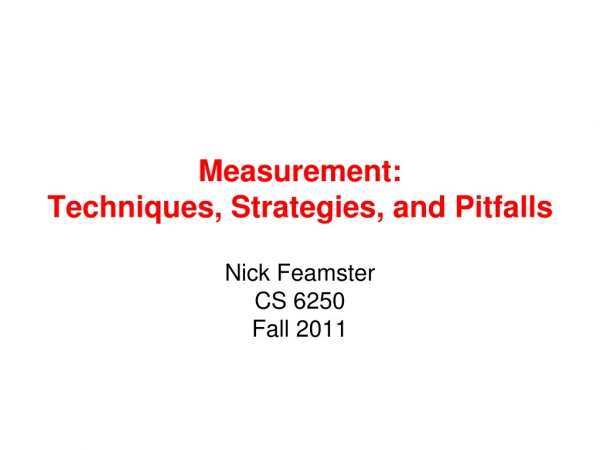
Measurement: Techniques, Strategies, and Pitfalls
Measurement: Techniques, Strategies, and Pitfalls. Nick Feamster CS 6250 Fall 2011. Internet Measurement. Process of collecting data that measure certain phenomena about the network Should be a science Today: closer to an art form Key goal: Reproducibility
490 views • 48 slides

Self defense techniques
Self-defense is something that everyone, male and female, should know. Thereu2019s no dearth of self-defense techniques require tools out there for you to add to your weapon store, but you might not forever be walking around with a self defense techniques key chain or a can of pepper spray. Go Combativs in Canada, Contact us ( 905) 228-0277






















